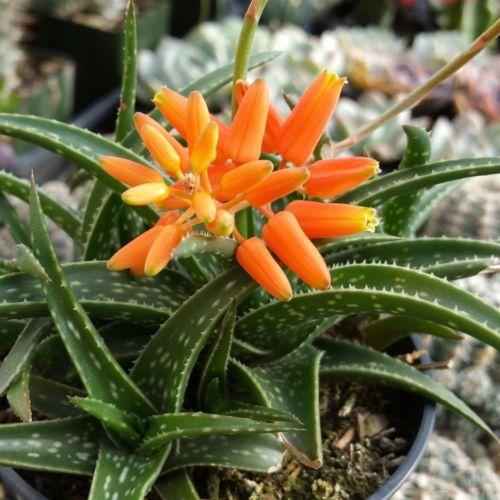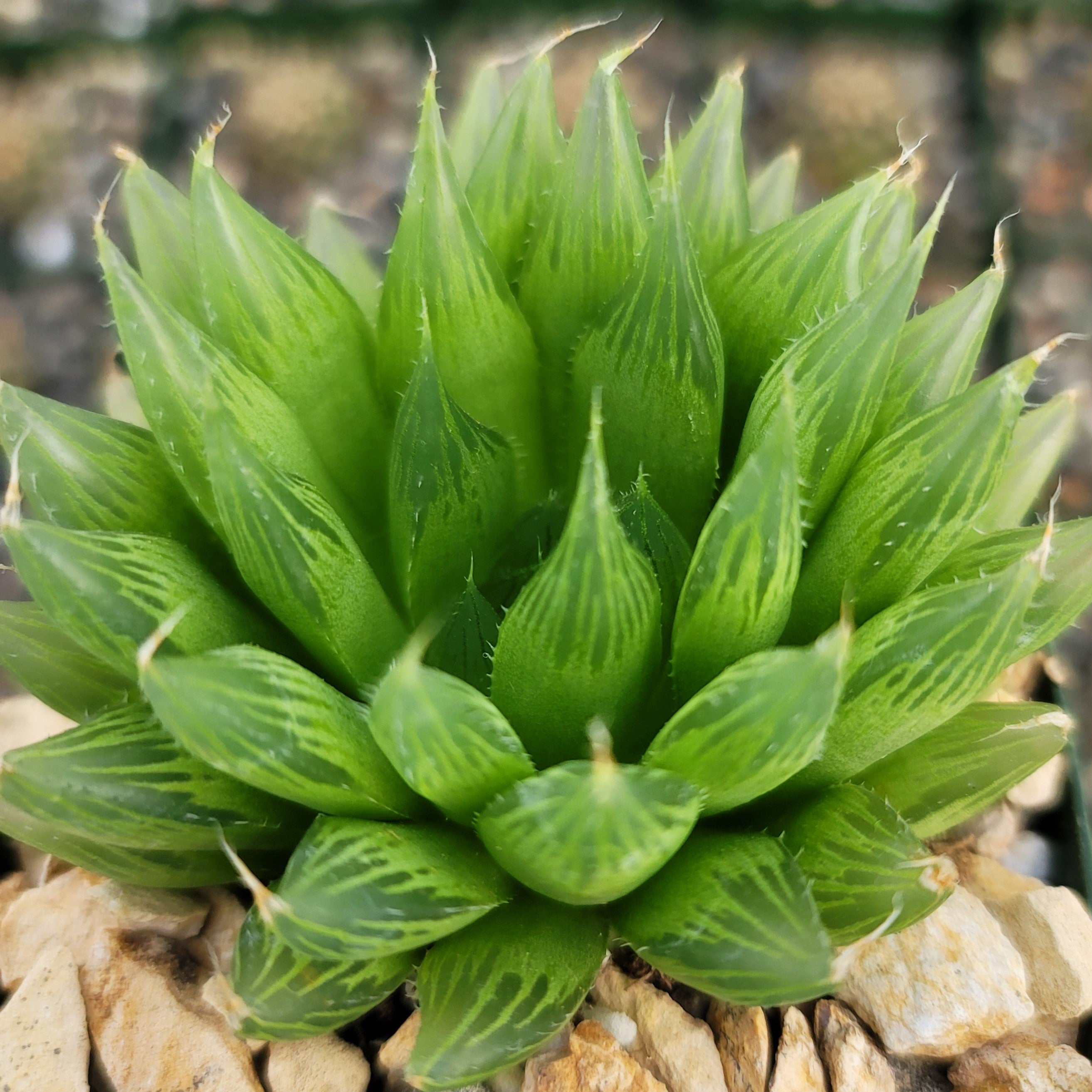All About Flowering Succulents 'Types, Care and Growing Tips' Everything You Need To Know !
Updated: January 28, 2025
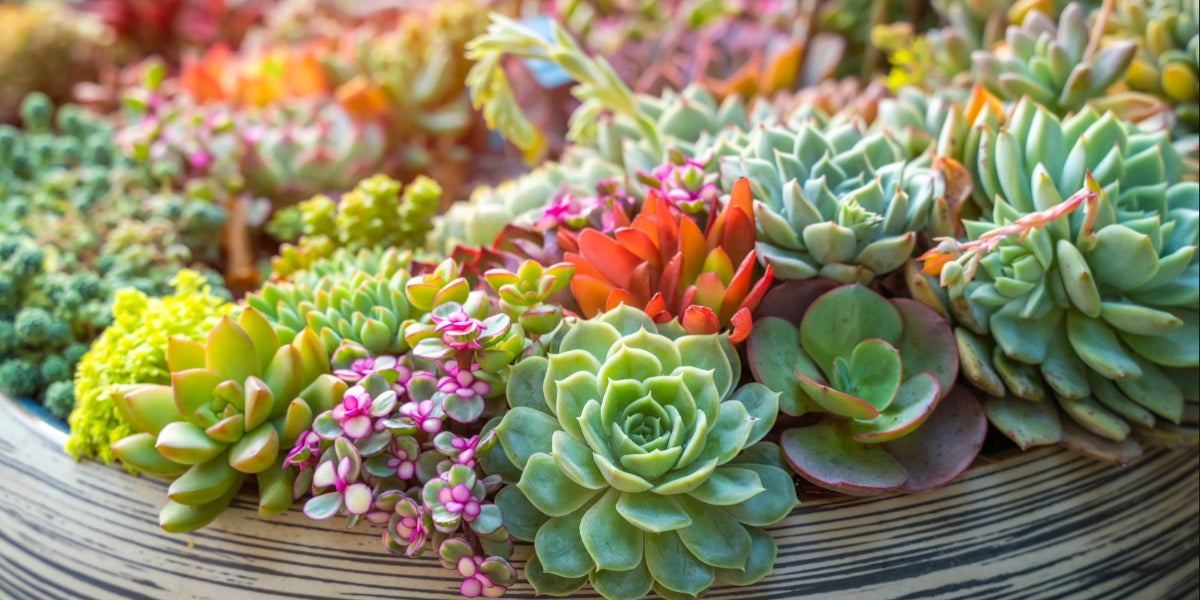
Flowering succulents offer a stunning combination of hardy, drought-tolerant plants and vibrant, eye-catching blooms. These unique succulent with flowers are not only easy to care for but also bring color and texture to any garden or indoor space. Whether grown in containers or garden beds, flowering succulents are prized for their ability to thrive in arid conditions while producing beautiful, often long-lasting flowers.
There are many kinds of succulents that flower, and the most popular colors include yellow, pink, purple, orange, white, and red. Flowering succulents add a dramatic and captivating element to landscapes, making them a favored choice among gardeners seeking low-maintenance yet striking plants.
10 Interesting Facts About Flowering Succulents

- Flowering succulents vary greatly in their blooming times. As Echeveria, bloom in late spring, while others, like Aloe, often bloom during winter months, bringing color to gardens even in the colder seasons.
- Succulents attract beneficial pollinators. Succulent flowers are not just for show; they play a vital role in attracting pollinators, such as Sedum and Crassula, are known to attract bees, butterflies, and even hummingbirds.
- Succulent flowers are designed to survive harsh environments. Many have evolved to conserve water, just like the plants themselves. For instance, Aloe flowers are tubular and waxy, reducing moisture loss while providing ample nectar for pollinators.
- Succulent have long-lasting bloom cycles. Unlike many traditional flowering plants, succulent flowers tend to last much longer. Some blooms can persist for several weeks or even months.
- The flowering succulents are affected by photoperiodism, the plant's ability to detect changes in day length. This process is regulated by a set of genes known as "florigen," which produce and regulate flowering hormones in plants. When these hormones are exposed to a certain amount of daylight, they cause a series of biochemical reactions that promote the development of floral buds.
- Flowering succulents typically go through a dormancy period before blooming. It allows them to store energy and prepare for the flowering phase, like Sempervivum need cold winters to trigger their spectacular summer blooms.
- Succulent flowers come in an incredible variety of shapes. From the star-like blooms of Sedum to the bell-shaped flowers of Echeveria and the tubular forms of Aloe.
- Certain succulent species produce edible flowers. It can be used in salads, teas, or as garnishes, such as, Sedum flowers are not only attractive to pollinators but can also be eaten raw.
- Succulents bloom in a variety of flower colors, including vibrant yellows, soft pinks, deep purples, striking reds, crisp whites, and warm oranges. Each hue adds a unique splash of color to gardens or indoor displays, making flowering succulents a versatile and stunning choice for any space.
- Succulents are easy to maintain yet rewarding. Flowering succulents are easy to care for, requiring minimal watering, thriving in poor soils, and producing stunning blooms, making them suitable for both beginners and experienced gardeners.
Our Favorite Flowering Succulents
A succulent with flowers adds a stunning burst of color and texture to any garden or indoor space. These hardy plants bloom in a range of hues, from vivid reds and yellows to soft purples and pinks, making them ideal for drought-tolerant landscapes and pollinator-friendly gardens.
Choosing the Perfect Flowering Succulents by Color
Below, explore our selection of flowering succulents that are categorized by color scheme, including vibrant yellows, soft pinks, rich purples, bright whites, striking reds, and warm oranges. These beautiful flowering succulents offer a colorful range for every garden style and homes!
Succulents with Yellow Flowers
Brighten up any space with succulents that produce cheerful yellow flowers, adding a sunny glow to your garden or indoor collection. Varieties with yellow blooms often thrive in full sun, offering a warm, eye-catching contrast against their green or blue-green foliage.
Succulent with Pink Flowers
Succulents with pink flowers bring a soft, romantic touch to gardens, perfect for adding delicate color without overwhelming other plants. These varieties often feature pastel or rosy hues that add charm and elegance, making them ideal for both indoor and outdoor settings.
Succulent with Purple Flowers
With deep, vibrant blooms, succulents with purple flowers create a dramatic focal point in any arrangement. The rich purple shades often attract pollinators and stand out beautifully against silvery or green foliage, adding depth and sophistication.
Succulent with Red Flowers
Red-flowering succulents bring a bold, fiery splash of color that instantly draws attention. These varieties are excellent for creating contrast and warmth, especially when planted in rock gardens or as vibrant accents in mixed succulent displays.
Succulent with White Flowers
Succulents with white flowers offer a clean, classic look, their soft blooms lending elegance and balance to any arrangement. These varieties are perfect for creating a serene, minimalist aesthetic or pairing with more colorful succulents.
Succulent with Orange flowers
Add a touch of warmth with succulents that bloom in vibrant shades of orange, bringing energy and vibrancy to your space. Perfect for desert-themed gardens or autumn-inspired arrangements, these orange-flowering succulents create a cheerful, welcoming atmosphere.
Types of Flowering Succulents Plants
Monocarpic Succulents: Also known as "one-bloom" succulents, they flower only once in their lifetime, typically after reaching maturity. After blooming, the mother plant dies, but offsets or pups are often produced, allowing for propagation.

Agave
These Agave plants produce a tall flower stalk after many years, and once they bloom, the mother plant dies, leaving behind offsets for propagation.

Aeonium
These succulents bloom with star-shaped flowers after reaching maturity, and the rosette that flowers will eventually die while the rest of the plant can continue growing.

Sempervivum
These hens and chicks succulents produce a single tall flower stalk from the rosette, which dies after flowering, but offsets ensure the plant's survival.

Kalanchoe
Some Kalanchoe species are monocarpic, flowering once before the main plant dies, but they often produce offsets or pups that can be propagated.
Polycarpic Succulents: They are also known as "repeat-bloom" succulents, and produce flowers multiple times throughout their lifetime. They often bloom seasonally, and the mother plant remains alive, continuing to produce new growth and flowers.

Aloe
This is another polycarpic succulent with flowers known for its thick, fleshy leaves and ability to bloom multiple times throughout its life, often producing tall flower spikes.

Echeveria
Echeveria is a rosette-forming succulent that blooms seasonally, showcasing colorful flowers while the mother plant continues to thrive and grow.

Crassula
Crassula is a diverse genus of succulents that repeatedly produces flowers, with popular varieties like the Jade Plant featuring clusters of small, star-shaped blooms.

Sedum
Sedum, also known as stonecrop, is a hardy succulent that flowers multiple times, often featuring clusters of small, vibrant blooms.
The Beauty and Diversity of Succulents with Flowers
From the soft pastel petals of Echeverias to the bold, striking blooms of Kalanchoe, the beautiful succulent plants with flowers can elevate both indoor and outdoor spaces with their intricate patterns and textures. Whether used in rock gardens, container arrangements, or window sills, these blooms add a dynamic and colorful touch that contrasts beautifully with their fleshy leaves.

Succulents have varied blooming seasons, allowing a garden to showcase flowers nearly all year.
Jade Plants (Crassula) bloom in winter, adding clusters of small white or pink flowers to their green leaves, while the Kalanchoe varieties burst into colorful blooms in summer.
Sedums flower anytime from spring through fall, with star-shaped flowers in various colors, while the Echeverias typically produce delicate, bell-shaped flowers in late spring or early summer.
Aloe plants provide tall spikes of tubular orange or red blooms during winter, while Haworthias bloom in summer with small, subtle white flowers.
Agaves can take years to flower but produce strikingly tall flower stalks once in life, while Lithops, also known as "living stones," bloom in autumn with daisy-like flowers.
This seasonal diversity ensures that with a well-chosen mix, succulents can bring continuous color and interest to any garden.
Factors that Encourage Succulents to Flower
Flowering succulents may be a rare sight, especially in the case of indoor succulents. However, a succulent owner will know that succulents are eager to bloom given the right conditions. A lot of care needs to be taken, though. As a succulent grower, you must know enough about the flowering succulent plants' unique needs, the native environment, seasonal cycles, and growth conditions.
Once buds are initiated, factors like light, temperature, and humidity play key roles in how well the flowers develop.
Quick Reference

Bloom Season
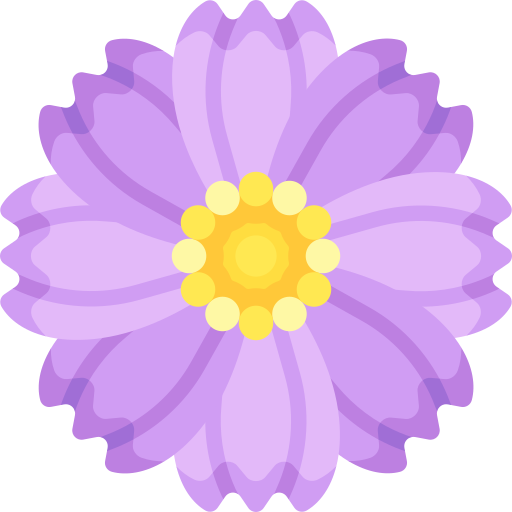
Flower Color

Growth Rate
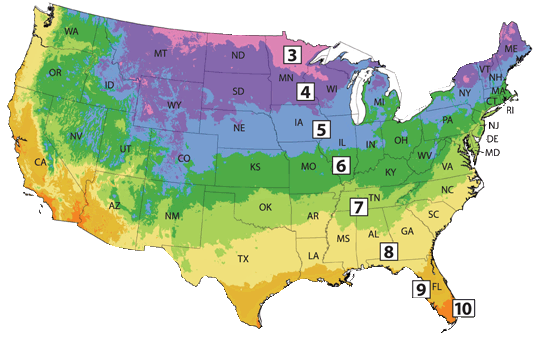
Hardiness Zone

Mature Size
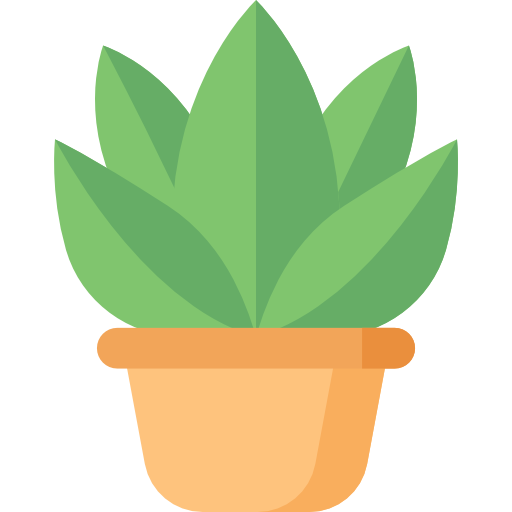
Plant Type

Sun Exposure

Resistance

Watering Needs
The Role of Light in Succulent Flowering: Tips & Guidelines
Succulents generally need bright light to thrive, but specific light requirements vary depending on whether they are grown indoors or outdoors. To maximize flowering in succulents, providing the right amount of light is crucial, as it fuels photosynthesis and promotes flowering.
- When growing indoors, place succulents in a spot that receives 6 to 8 hours of bright, indirect sunlight daily. A south-facing window works best for most succulents, but if direct sunlight is too harsh, sheer curtains can help diffuse the light. Rotate indoor succulents periodically to ensure all sides receive light, which prevents leaning or uneven growth. If natural light is insufficient, use grow lights to supplement sunlight, especially during winter months.
- For outdoor cultivation, they thrive in full sun. Though some varieties, like Echeveria and Sedum, prefer morning sun and partial afternoon shade to avoid sunburn. Gradually acclimate indoor succulents to outdoor sunlight by increasing their exposure over a few days to prevent scorching. In hot climates, providing filtered sunlight or shade during peak afternoon hours can prevent stress and enhance blooming.
Short-day succulents usually bloom in the fall or winter when the days are shorter, but long-day succulents bloom in the spring or summer when the days are longer.
Pro Tip
To promote blooming in short-day succulents such as Christmas cacti, cover them with a black cloth or place them in a dark closet for up to 14 hours per day. This simulates the shorter days of fall and winter, triggering the plant's blooming process. Long-day succulents, such as Echeverias, can be exposed to sunlight for up to 14 hours per day by leaving them outdoors or under grow lights. This simulates longer days in spring and summer, encouraging the plant to bloom.
Watering Tips For Flowering Succulents: Frequency and Quantity
Proper watering is key to encouraging blooming in succulents. Overwatering can lead to root rot, while underwatering can stress the plant, hindering bloom production. The goal is to find a balance that allows the plant to thrive throughout its growing and dormant seasons.

- During active growing season, water your succulents deeply but infrequently, allowing the soil to dry out completely between waterings. For indoor plants, water approximately once every 1 to 2 weeks, depending on humidity and temperature. Outdoor succulents in hot, dry climates may need watering once a week, but always ensure the soil is well-draining.
-
In the dormant period, watering is reduced significantly as most succulents enter dormancy and require less moisture. Indoor succulents may only need watering once a month during winter, especially if kept in cooler temperatures. Outdoor succulents in dormancy, especially in cooler climates, require little to no watering during winter.
It is important to monitor the soil moisture levels and adjust watering frequency accordingly to prevent overwatering.
For Optimal Flowering and Growth – Choose an Optimal Succulent Soil Mixture & Select the right type of Balanced Fertilizer
Succulents require well-draining soil and occasional feeding to support strong, healthy growth and encourage blooms. The right soil mix and balanced fertilizer provide essential nutrients for maximum flowering.
- Good drainage is essential, so ensure pots have drainage holes and avoid using heavy, moisture-retentive soils that can lead to root rot. Ideally, you want to use our specialized potting mix, which contains 5 natural substrates and organic mycorrhizae, to promote the development of a strong root system that helps your succulent/cactus thrive. For those DIY people, an okay alternative is to create your own potting mix by combining equal portions of perlite, coarse sand, and good natural potting soil.
- Fertilize succulents sparingly, typically once during the active growing season in the spring to encourage flowering. Use a balanced, water-soluble NPK fertilizer with the ratio of 5-10-5, or choose one specifically formulated for succulents. Avoid over-fertilizing, as too much can lead to weak, leggy growth rather than blooms. In dormant seasons, fertilization is not necessary.
Hardiness Zone & Temperature: What Flowering Succulents like Best?
Succulents thrive in warm, dry conditions, but different varieties have varying tolerances to temperature, humidity, and frost. It's important to understand their hardiness zones to ensure the best environment for flowering.
- When growing indoors, they prefer a warm temperature between 60°F and 80°F. During winter, they can tolerate temperatures as low as 50°F, but anything lower can stress the plant. Indoor humidity should be kept low, as succulents prefer dry air. Ensure proper air circulation to avoid excessive moisture buildup. In humid climates, use a dehumidifier or increase ventilation around your plants.
- For outdoor cultivation, they thrive in USDA zones 8 to 11. But some cold-hardy species like Sempervivum can tolerate lower zones, down to Zone 3. In colder regions (below Zone 8), outdoor succulents should be brought indoors during winter or protected with frost covers. Outdoor humidity should be low to moderate, as succulents prefer dry conditions. In high-humidity climates, ensure they are planted in fast-draining soil to prevent root rot.
Deadheading and Pruning for Better Growth
- Remove Spent Blooms: Once the flowers begin to fade or wilt, carefully snip them off using clean scissors or pruning shears. This helps the plant redirect energy to new growth rather than seed production.
- Prune Leggy Growth: If your succulent begins to grow leggy, cut back the long stems to encourage a fuller shape. Make clean cuts just above a leaf node to promote new branching.
- Promote Airflow: Regularly trim away any dead or damaged leaves at the base to improve airflow and prevent fungal issues.
Dealing with Monocarpic Succulents
- Understanding Monocarpic Blooming: Monocarpic succulents, such as Agave, bloom once in their lifetime. After flowering, the main plant will gradually decline.

- Encourage Offsets (Pups): Many monocarpic succulents produce offsets or "pups" around the base before dying. Remove and replant these pups to propagate new plants.
- Remove Dead Plant: Once the main plant dies after flowering, cut away the withered parts, but leave any healthy pups to continue growing.
Pest and Disease Prevention for Flowering Succulents
Theses succulents are resistant to the majority of Pests. Despite being simple to uphold, growing succulents with flowers can present some challenges.
- Inspect Regularly: Check your succulents frequently for common pests like aphids, mealybugs, or spider mites, which are often attracted to flowers.
- Natural Pest Control: If pests are found, use insecticidal soap, neem oil, or introduce beneficial insects like ladybugs to control the problem.
- Fungal Issues: Ensure your succulents are planted in well-draining soil to prevent root rot and fungal growth, especially during flowering when plants are more vulnerable.
- Maintain Clean Conditions: Keep the area around your plants clean of debris and dead leaves to reduce the chances of pest infestations or diseases.
Key Takeaways
- Flowering succulents showcase a vibrant range of colors, including red, purple, yellow, pink, and orange blooms.
- Their bright flowers attract pollinators like bees, butterflies, and hummingbirds, enriching local ecosystems.
- They are known for their drought tolerance, flowering succulents store water in their leaves and require minimal watering.
- Some flowering succulents bloom only once in their lifetime, while others provide seasonal or year-round color.
- They are low-maintenance plants that thrive in well-draining soil and sunny spots with little care.
- Flowering succulents adapt well to both indoor and outdoor environments, making them a versatile choice for gardeners.
The Bottom Line
Overall, flowering succulents are more than just decorative plants—they offer a captivating blend of resilience and beauty that can transform any garden or indoor space. With their wide variety of shapes, vibrant blooms, and unique growing patterns, these plants offer a one-of-a-kind experience for plant lovers and collectors. By mastering key care practices like deadheading, handling monocarpic varieties, and preventing pests, you’ll not only keep your succulents healthy but also unlock their full blooming potential. For buyers, investing in flowering succulents is like adding a living sculpture to your space, where every bloom tells a story of patience, care, and natural wonder. Let these hardy yet stunning plants thrive in your collection, offering both visual appeal and a deeper connection to the natural world.
Frequently Asked Questions
-
Do succulents bloom?
Yes, succulents do bloom, though it can sometimes be a rare or unexpected occurrence depending on the species and growing conditions. When they flower, succulents produce stunning blooms that vary in color, shape, and size. Some succulents produce vibrant flowers, while others may have more delicate, understated blossoms. For most succulents, blooming is an indicator that they are healthy and receiving the appropriate care, including the right balance of light, water, and nutrients.
-
Is it rare for succulents to flower?
It can be somewhat rare for succulents to flower, particularly for indoor plants, since many succulents need specific conditions to bloom, such as adequate sunlight and the right growing season. Outdoor succulents in their native environments or ideal climates are more likely to flower regularly. However, with optimal care, succulents kept indoors or in containers can also produce flowers, though they may take several years to do so.
-
How often do succulents bloom?
The frequency of succulent blooming depends on the species and the conditions in which they are grown. Some succulents, like Kalanchoe, may bloom annually, while others, such as certain species of Aloe or Haworthia, bloom less frequently. Some succulents, like Agave, are monocarpic, meaning they bloom once in their lifetime—usually after many years of growth—and then die. Succulents typically bloom in specific seasons, with some flowering in spring, while others bloom in summer or fall.
-
What kind of succulents have flowers?
Many succulent species produce beautiful, eye-catching flowers, and some of the most popular flowering varieties include:
- Aloe: Known for its spiky leaves, Aloe plants often bloom with tubular, orange or yellow flowers, especially when grown outdoors in sunny conditions.
- Echeveria: A favorite among succulent lovers, Echeveria species bloom with delicate, bell-shaped flowers in pink, red, orange, or yellow, adding a touch of elegance to their rosette shapes.
- Kalanchoe: Often seen as a houseplant, Kalanchoe blooms prolifically with clusters of small flowers in colors ranging from pink and red to yellow and white.
- Sedum: Low-growing and hardy, Sedum succulents produce clusters of tiny star-shaped flowers in shades of yellow, white, pink, or red, making them popular ground covers.
- Crassula: Known for its diverse forms, Crassula includes varieties like the jade plant, which produces small white or pink flowers that attract pollinators.
- Graptopetalum: This succulent blooms with small, starry flowers in pink or white, often adding a delicate touch to rock gardens or mixed arrangements.
- Haworthia: Generally grown for its striking foliage, Haworthia can also bloom with long, thin stalks of small, white flowers, usually in spring or summer.
These flowering succulents not only offer unique foliage but also add a vibrant array of colors and textures to any garden or indoor setting, especially when in bloom.
-
What to do after a succulent has flowers?
Once a succulent has finished flowering, it’s important to trim away the spent blooms, a process known as deadheading. This helps to redirect the plant’s energy back to growth and maintenance rather than seed production. For monocarpic succulents, like Agave, which die after flowering, you may need to remove the entire plant. For others, regular care should continue, ensuring they receive enough sunlight, water, and nutrients to support future growth and potentially another blooming cycle.
-
Are succulents dying when they bloom?
Only certain succulents die after blooming, a process known as being monocarpic. Plants like Agave and some species of Sempervivum will bloom once in their lifetime, and after producing flowers, the main plant will die, though they often produce offsets or “pups” that will carry on the plant’s life cycle. For most other succulents, blooming is a natural part of their growth and does not indicate the plant is dying. Blooming succulents generally remain healthy and continue to grow after their flowering period.


































































